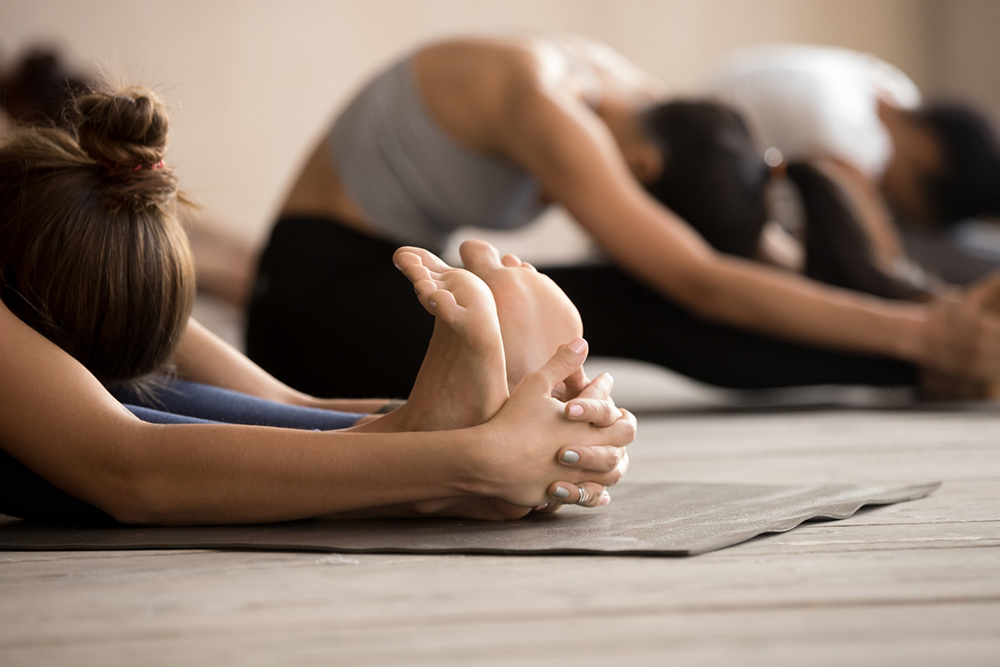TMJ Pain Relief – Exercises and Tips to Follow
The temporomandibular joint (TMJ) is a hinge-like bone that connects the lower jaw bone to the skull. There are two TMJs, one on each side of the face. Dysfunction in this area, caused by teeth grinding, jaw injuries, or arthritis, can lead to discomfort and tenderness in the joint and surrounding muscles and ligaments. This is known as TMJ pain. Engaging in exercises and undergoing physical therapy can provide significant relief from this pain.
Exercises to alleviate TMJ pain
1. Goldfish exercise
Start by pressing the tongue to the roof of the mouth. Then, place one index finger on the left TMJ and the other on the chin.

2. Mandibular stabilization exercise
Those with a decreased range of motion due to TMJ pain may benefit from this exercise. To try this:
- Begin with the jaw in a neutral, relaxed position.
- Place the thumb on the base of the jaw (right under the chin), and apply a little pressure while opening the mouth.
- Keep repeating this, slowly moving the thumb to each side of the mouth.
Try to complete five sets of this exercise daily to effectively manage pain.
3. Cervical retraction or chin tucks
TMJ pain may often occur due to bad posture or spinal alignment. Chin tucks can help rectify this to a great extent. Stand upright with the shoulders pulled back and the chest lifted. Then, bring the head straight to the back and tuck in the chin while maintaining this motion. Keep the head straight throughout. Hold this position for three seconds, and repeat this exercise up to 10 times daily for pain relief.
4. Side-to-side jaw exercise
This exercise requires a small object, such as a flat wooden stick, to create a proper target for the range of motion. Place the stick in the mouth, holding it up with a light bite. Then, work on shifting the stick from the left to the right without loosening the bite on the stick. Shift the bottom jaw forward and back as well. Once this starts to feel easy, progress onto a thicker stick.
5. Tongue up exercise
Those looking for a simple exercise to relax their TMJ must try this tongue-up exercise. Find a comfortable sitting or standing position, and then touch the tongue to the roof of the mouth. Without letting the tongue drop from this position, try to extend the jaw as far as possible. Maintain the tongue’s position at the roof of the mouth, and try to close the jaw and open it again. Practice this exercise in sets of 10 at least three times a day.
6. Rocabado’s 6×6 exercise routine
Introducing a series of exercises to one’s lifestyle can be an effective way of relieving TMJ pain. This specific routine has six parts to it.
- Place the tongue on the mouth’s upper palate, gently applying pressure in the process.
- Open and close the jaw with the tongue in this position. This will help improve control of the TMJ’s rotation.
- Then, work on rhythmic stabilization by placing two fingers on the chin and continuing to open and close the jaw with the tongue still pressed to the roof of the mouth.
- Start to lift and lower the chin in a nodding motion. This is known as the axial extension of the neck.
- While lifting and lowering the chest, squeeze the shoulder blades together.
- Lastly, try to bring the neck forward (creating the illusion of a double chin) towards the chin, and then push it out again.
Repeat this set of exercises a few times to relieve tension in the TMJ area and reduce pain.
7. Relaxation exercises
Some seniors may find it difficult to carry out an extensive exercise routine to relieve TMJ pain. For such individuals, relaxation exercises can be extremely beneficial to reduce stress and promote muscle relaxation.
- Inhale slowly, breathing into the belly. Exhale just as slowly, trying to mimic the pace of the inhalation. Repeat this exercise 5-10 times to promote a sense of calm and relaxation.
- Sit or lie down in a comfortable position, one where the back is properly supported. Tense and release muscle groups, moving from the tips of the toes to the top of the head. This exercise promotes progressive relaxation, helping one become aware of problem areas and release any tension.
Tips for TMJ pain relief
1. Avoid hard foods
Hard or chewy foods can worsen TMJ pain. Instead, opt for softer foods like rice and take small, manageable bites while eating.
2. Wear a mouthguard
Doctors often recommend wearing a mouthguard to avoid grinding of teeth (bruxism).
3. Manage stress levels
Stress can be a major causative factor for TMJ. Try stress relief and management strategies such as yoga, meditation, and breathing exercises to keep the muscles relaxed throughout the day.
4. Try temperature therapy
Hot and cold compresses can provide significant relief from TMJ pain. The former helps improve blood circulation to reduce muscle stiffness, while the latter may help reduce swelling and pain.

